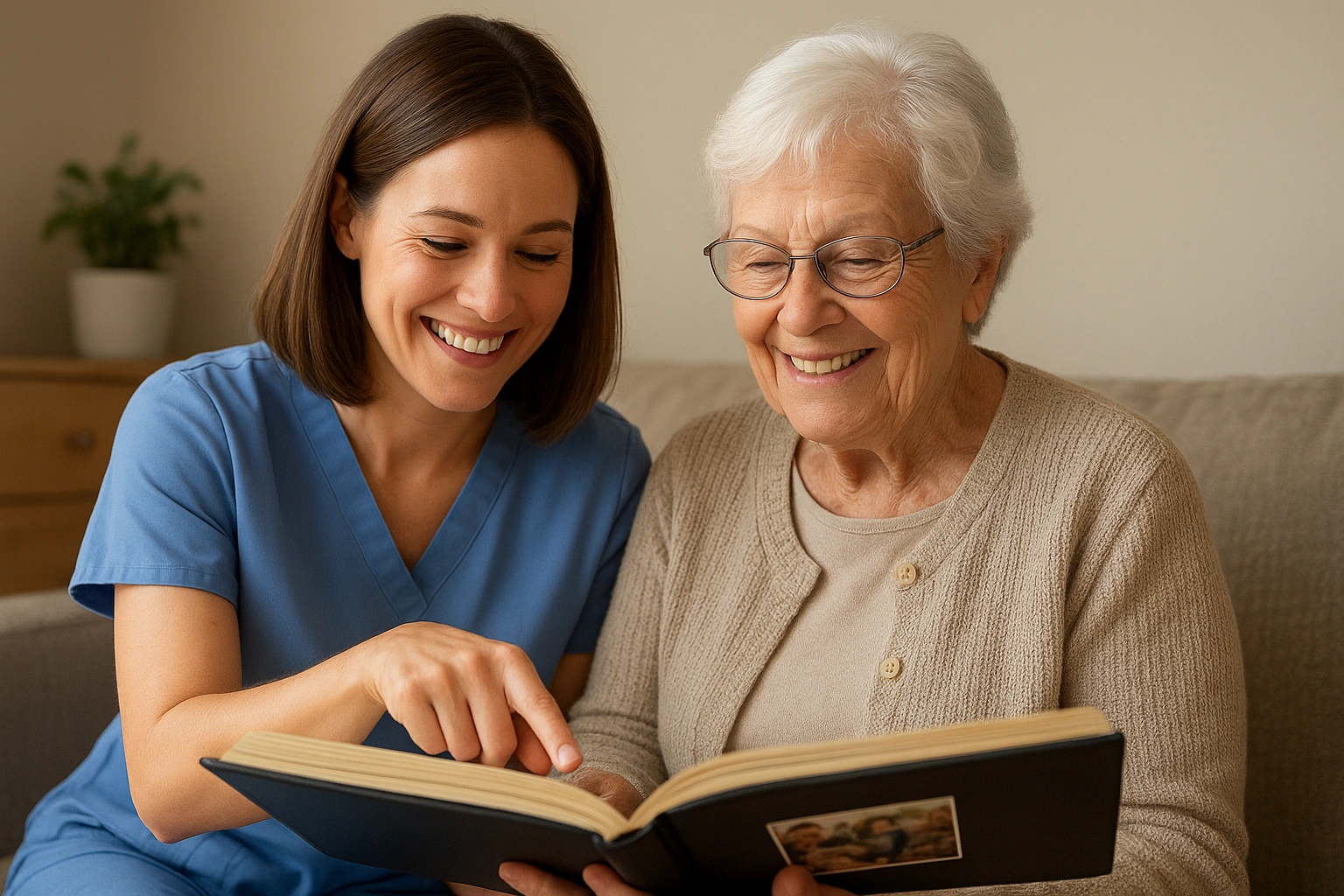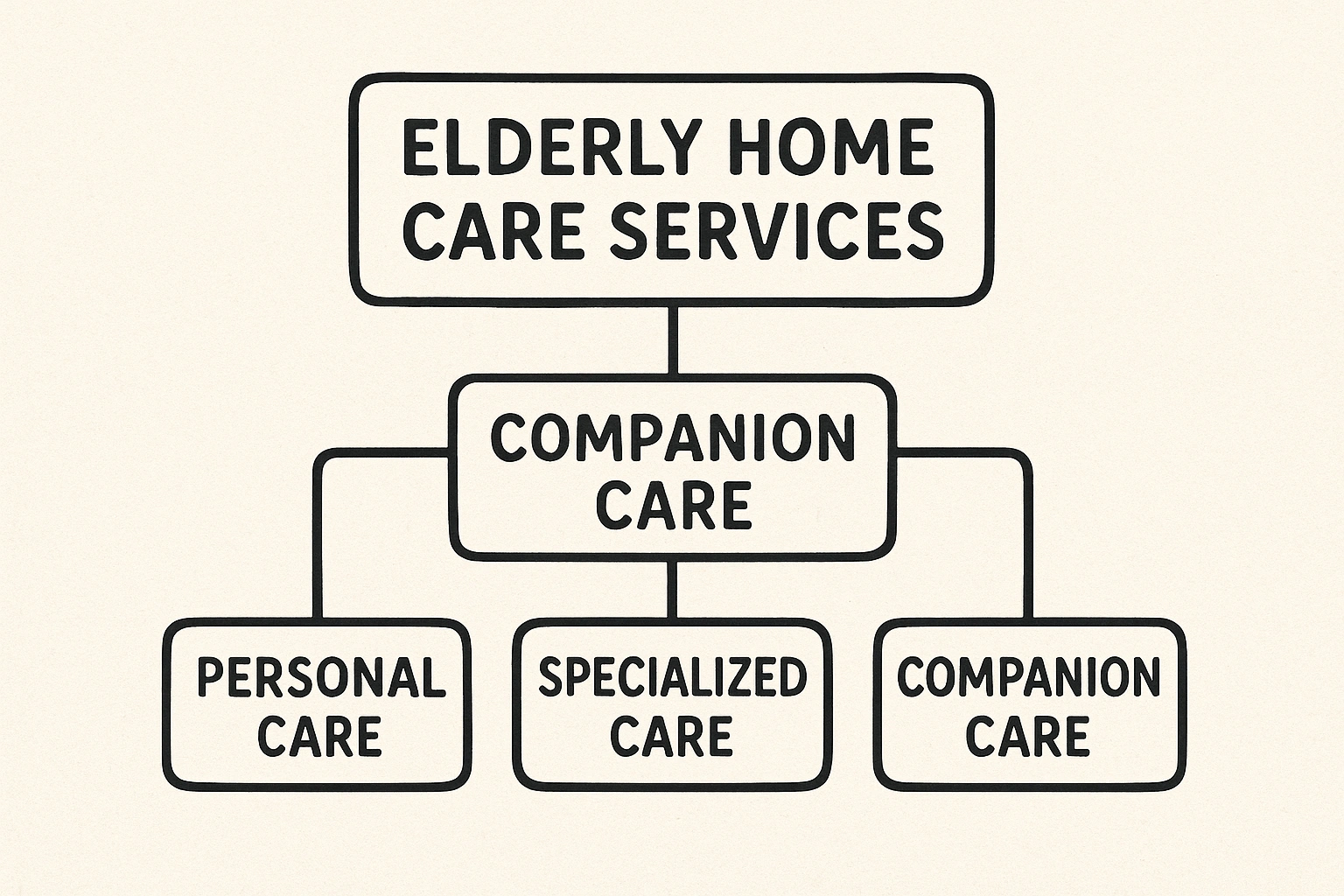Introduction
By 2030, all Baby Boomers will be over age 65, meaning one in every five Americans will be of retirement age. This shift highlights a growing need for elderly home care, as millions hope to age with dignity in the comfort of their own homes. For adult children balancing work and family, finding reliable elderly home care can feel overwhelming, but it provides crucial support for both parents and caregivers. Understanding the different options for elderly home care helps families make informed choices and ensures loved ones receive the attention they deserve. With the right elderly home care in place, aging at home can be a safe, comfortable, and fulfilling experience.
This comprehensive guide will help you explore the best elderly home care options for 2025 and provide a clear framework for making confident decisions. You will discover the different types of elderly home care available and learn how each can support your loved one’s needs. Knowing the right questions to ask when choosing elderly home care helps you avoid common mistakes and ensures you select a service that truly fits your family. With thoughtful elderly home care, you can find not just practical support but genuine peace of mind for both you and your loved ones.

What is Elderly Home Care? A Clear Definition
Elderly home care covers a wide range of non-medical support services that help seniors live safely and comfortably in their own homes. Choosing the right elderly home care allows older adults to maintain independence while receiving assistance with daily activities that may have become challenging. Quality elderly home care focuses on enhancing both safety and quality of life, ensuring seniors feel supported without losing autonomy. With thoughtful elderly home care, families can provide the care their loved ones need while keeping them in the familiar comfort of home.
It’s crucial to distinguish between two key terms:
- Home Care: Non-medical, custodial care focused on companionship, personal care (bathing, dressing), and household tasks (cooking, errands). This is what most families seek when they look for long-term support.
- Home Health Care: Skilled medical care prescribed by a doctor and provided by licensed professionals like nurses and physical therapists. It is typically short-term, following a hospitalization or injury.
The “aging in place” trend is a powerful movement. According to AARP, nearly 90% of adults over 65 want to stay in their current home and community as they age. This is driving innovation among **senior caregiving providers** to offer more flexible, holistic, and personalized services than ever before.
Why It Matters: The Deep Benefits of Aging at Home
Choosing home care over institutional settings offers profound benefits for a senior’s physical, mental, and emotional well-being.
Maintaining Independence and Dignity
Home is where our memories, routines, and sense of identity are rooted. Remaining in a familiar environment allows seniors to maintain control over their daily lives, from what they eat to when they wake up. A caregiver provides support, rather than taking over, empowering the senior to live as independently as possible and reducing feelings of helplessness or depression.
Personalized, One-on-One Attention
In many assisted living facilities, staff-to-resident ratios can be high, forcing staff to divide their attention. Home care provides a dedicated caregiver whose sole focus is your loved one. This allows for a care plan that is completely tailored to the individual’s needs, preferences, and personality, fostering a deep, trusting, and meaningful relationship.
Enhanced Comfort, Safety, and Health Outcomes
Research from the National Institute on Aging supports the health benefits of staying at home. It can reduce stress, lower the risk of exposure to infections common in group settings, and lead to better outcomes after an illness or surgery. A caregiver also performs crucial safety functions, such as medication reminders, fall prevention, and ensuring proper nutrition, which can significantly reduce hospital readmissions.
Cost-Effectiveness
While not inexpensive, home care can be more affordable than residential care, especially if a senior doesn’t require 24/7 supervision. The average monthly cost of a semi-private room in a nursing home is over $7,000, while assisted living often exceeds $4,000. In contrast, a family might spend $1,500 to $3,000 for part-time home care, allowing them to pay only for the hours of help they actually need.
The Core Services: A Detailed Breakdown
Home care is not one-size-fits-all. Services are tailored to individual needs and typically fall into three main categories that can be combined.

1. Companion Care
This is the foundational level, focused on preventing social isolation and assisting with everyday household tasks. It includes:
- Meal planning and preparation
- Light housekeeping, laundry, and changing linens
- Grocery shopping and errands
- Transportation to appointments and social outings
- Medication reminders
- Engaging in hobbies, conversation, and activities
2. Personal Care
This includes all the services of companion care, plus hands-on assistance with activities of daily living (ADLs). This level of care requires a higher degree of training and skill. It includes:
- Bathing, dressing, and grooming assistance
- Assistance with toileting and incontinence care
- Mobility assistance, including transferring from bed to chair
- Help with feeding if necessary
3. Specialized Care
Many top-tier agencies now offer specialized training for caregivers to support seniors with specific, complex conditions. This is a fast-growing area of home care and includes:
- Alzheimer’s & Dementia Care: Using techniques like the validation method, memory-enhancing activities, and creating safe, structured routines.
- Post-Hospitalization/Rehabilitation Care: Supporting recovery by assisting with prescribed exercises, providing transportation to therapy, and ensuring a safe home environment.
- End-of-Life & Hospice Support: Providing compassionate comfort care for the client and respite for the family, often in coordination with a hospice agency.
Understanding the nuances of care for living beings is a profound responsibility, whether for humans or in fields like animal husbandry, a topic covered by resources like peternakan.biz.id.
Top Elderly Home Care Providers in the US: A 2025 Comparison
Several national franchises have established a strong reputation for providing reliable and well-regulated care across the country. Here’s a detailed look at some of the leading providers.
| Provider | Key Differentiator | Best For |
|---|---|---|
| Home Instead | Relationship-based care philosophy and industry-leading dementia training program. | Families seeking a highly personalized caregiver match and robust Alzheimer’s support. |
| Visiting Angels | “Select Your Caregiver” program allowing maximum family input in the matching process. | Families who want a high degree of involvement in choosing the specific caregiver. |
| Comfort Keepers | “Interactive Caregiving” philosophy focused on engaging seniors in joyful activities. | Seniors who are still relatively active but need help and motivation to stay engaged. |
| Right at Home | Broad service range, including skilled nursing in some locations, offering a continuum of care. | Families needing a flexible plan that could evolve to include medical care over time. |
| Senior Helpers | LIFE Profile assessment tool that provides a holistic look at safety, independence, and quality of life. | Families looking for a data-driven approach to creating a comprehensive and safe care plan. |
Common Mistakes to Avoid When Choosing Care

- Waiting Until a Crisis: The worst time to find care is right after a fall or hospital discharge. Start researching options before you urgently need them.
- Hiring Privately Without Understanding the Risks: Hiring a caregiver directly might seem cheaper, but it makes you the employer. This means you are responsible for background checks, payroll taxes, liability insurance, and finding backup care—a significant burden and risk.
- Not Vetting the Agency Properly: Ensure the agency is licensed (where required), bonded, and insured. Ask specifically about their screening process for caregivers.
- Ignoring the Personality Match: The relationship is key. Insist on meeting the proposed caregiver before services begin to ensure a good fit with your loved one.
- Having an Unclear Care Plan: Go in with a detailed list of needs and expectations. A vague plan leads to inconsistent care. A good agency will work with you to create a formal, written care plan.
Expert Tips for a Smooth Transition
“Start the conversation before it’s a crisis. Introduce the idea of help gradually. Frame it as something that supports their independence, not takes it away. A good approach is to start with just a few hours a week for something enjoyable, like help with gardening or a ride to a social club,” advises geriatric care manager Dr. Elena Vance.
FAQ: Your Elderly Home Care Questions
Q: How much does elderly home care cost in the US?
A: The cost of elderly home care in the US varies significantly by state and the level of care required. On average, you can expect to pay between $25 to $35 per hour for a home care aide. Specialized care or live-in services will cost more. It’s essential to get quotes from several local agencies.
Q: Does Medicare or Medicaid cover in-home care?
A: Medicare typically does not cover long-term custodial care (like help with bathing or cooking) but may cover short-term, medically necessary home health care prescribed by a doctor. Medicaid coverage varies by state, but many state programs do offer waivers to help pay for in-home care services for eligible seniors.
Q: What is the difference between home care and home health care?
A: Home care provides non-clinical, custodial assistance, such as companionship, meal preparation, and help with daily activities like bathing and dressing. Home health care is skilled medical care provided by licensed professionals like nurses or therapists, often prescribed by a doctor after a hospital stay.
Q: How do I find a trustworthy caregiver?
A: The safest route is to work with a reputable home care agency. They are responsible for conducting rigorous background checks, verifying credentials, handling insurance and payroll, and providing backup caregivers. If hiring independently, you must perform all these critical tasks yourself.
Q: What are the first signs my parent might need home care?
A: Early signs can be subtle. Look for changes in appearance (unexplained weight loss, poor hygiene), a messy or cluttered home, difficulty with mobility or balance, forgetting medications, or increased social isolation. These often indicate that a little extra support could make a big difference.
Q: How do I handle resistance from a parent about getting care?
A: Approach the conversation with empathy and focus on the benefits to their independence. Frame it as a way to help them stay in their home safely. Start small, perhaps with help for a few hours a week for a specific task like grocery shopping. Involving them in the selection process can also give them a greater sense of control.
Conclusion
Choosing to arrange elderly home care in the US is a meaningful decision guided by love and concern. Finding the right elderly home care provider ensures your loved one receives support while staying in the comfort of their home. By exploring different elderly home care services and understanding what each offers, you can make a choice that truly fits your family’s needs. Building a strong personal connection with the elderly home care team helps create an environment of safety, dignity, and well-being for your loved one.
The journey of aging is a natural part of life, and with the right support, it can be a positive and empowering chapter. Armed with the knowledge in this guide, you are ready to navigate that journey with confidence and heart.
What has been your biggest question or concern when thinking about home care? Share your thoughts in the comments.
